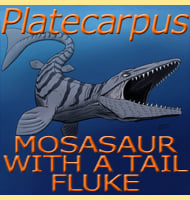Latoplatecarpus
In Depth During the Cretaceous period much of Modern day Manitoba would have been submerged under the Western Interior Seaway, which is how the fossils of the mosasaur Latoplatecarpus made it so far inland. After the original material was prepared and described, some further remains that were once attributed to Plioplatecarpus were reassigned to Latoplatecarpus … Read more
